#monastery zaglav
Explore tagged Tumblr posts
Text
Evening in Sali and visiting the cliffs near Fort Grpašćak

What’s that? Scoll and read! :)
The evening came and so did Mirel's call. He picked me up and we drove off to Sali.
Evening at Sali

Since I took no photos in Sali the first evening, only tasted food, here’s a morning photo of the port...more photos in the upcoming post.
It took us less than 10 minutes to get to Sali. The biggest town on the island located in the south-eastern part of Dugi otok with around 800 or more people. it's also the administrative centre of Dugi otok. Sali have a thousand years old tradition of fishing mentioned in the documents as early as the 10th century and are also known for the olive orchards in the fields that were important in the agriculture of the settlement. The town has a developed tourism based on excursions, sailing and sports. Being the largest town on the island they have a hospital, post and ATMs. Sali also have a notable library with books in several world languages but also a location where many interesting events take place.
Unfortunately, plans changed and I didn't spend much time around Sali so I can tell you only a few things of the personal experience. For instance, Sali and the island got their first night club which was opened maybe 2 months prior to my arrival. As you can guess the first thing that came to my mind was “Let’s do some salsa & bachata here!”...but didn't have time to go there...and the circumstances didn’t allow it (next post explains). The same goes for the library. Well, next time.
Back to our trip. The road goes in many curves up and down the hills where you need to be careful. As Sali is mostly in the bay the road goes down the hill to the town. The plan was to get to one restaurant in the centre of the bay for a pizza. To get down right next to the sea it might be tricky if you are not from there. You leave the main road close to this famous fish factory - Mardešić. Again, the road on this part is wide enough for one car so you have watch for the potential vehicles from the opposite direction around the corners. The fish factory Mardešić is right next to the sea and there we are - the promenade. Here you have a nice view over the bay and the port of Sali.
The centre of the bay has several bars and restaurants. One can also find the store Tommy, the only one on the island, which offers groceries and other stuff such as Konzum, Spar etc. and the prices were similar to the ones in Zagreb, if not cheaper. I might have mentioned that it's a suicide for your wallet if you choose to buy food or anything at the small local private stores where the prices can be double or even three times higher than the average ones. The restaurant we wanted was full so Mirel took me to the bar of his friend. There we sat on the terrace and he ordered for us cheese and pršut (smoked ham) with spilled olive oil. The best thing to eat here and there, tasty and keeps your stomach full. As it was a bit windy and I didn't bring a jacket, this food helped keep my ass warm. After some time we decided to check other places. I will add more of Sali and Saljani (people) in the upcoming post to follow the timeline of the events chronologically.
Night at the cliffs of Telašćica and the military base of Grpašćak

Military base Grpašćak to the left and the cliffs of Dugi otok. There is nothing to the right except for the open sea...and afterwards Italy. This was taken around 10pm in the evening - thank the full moon for no stars.
The next destination Mirel wanted me to see were the famous cliffs of Telašćica on the western part of the island. I visited them once 10 years ago but it's always a great experience. The night fell and we drove away from Sali.
youtube
On our way to the cliffs. What it looks like going via local roads through the fields at night
After 15 minutes of going through some local macadam roads you wouldn't usually find, up and down through the olive orchards and fields with stone walls on each side, passing by the sea bay and... we came close to the military base and viewpoint of Grpašćak.

Again the cliffs and the sea. Photo taken during the full moon night
The furthest you can go is till one small heliodrom above the cliffs. There we stopped and I was happy to get some night sky photos too. Didn't work though thanks to the full moon those few evenings. The edge of the cliffs of the viewpoint is protected with the wooden fence. Mirel took the stone and told me "You know how high this platform is?" and threw the stone down into the sea. You couldn't hear it. Apart from the waves though it was a relatively still night and the sea, the height we stood at was about 80m above the sea level.
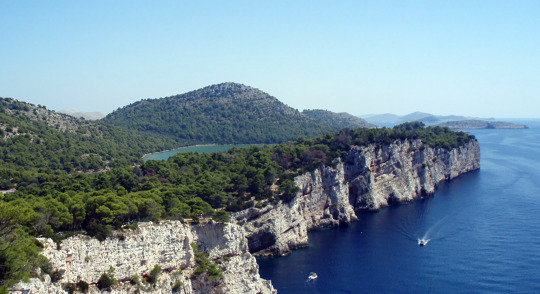
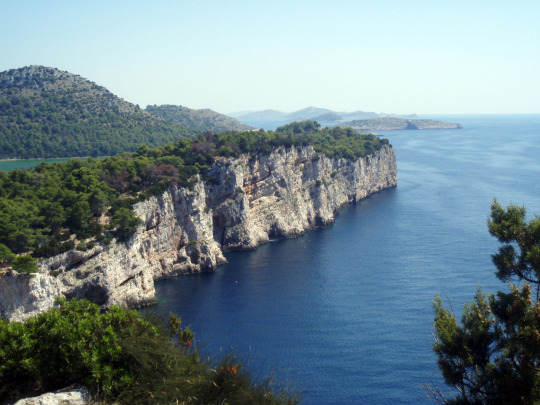
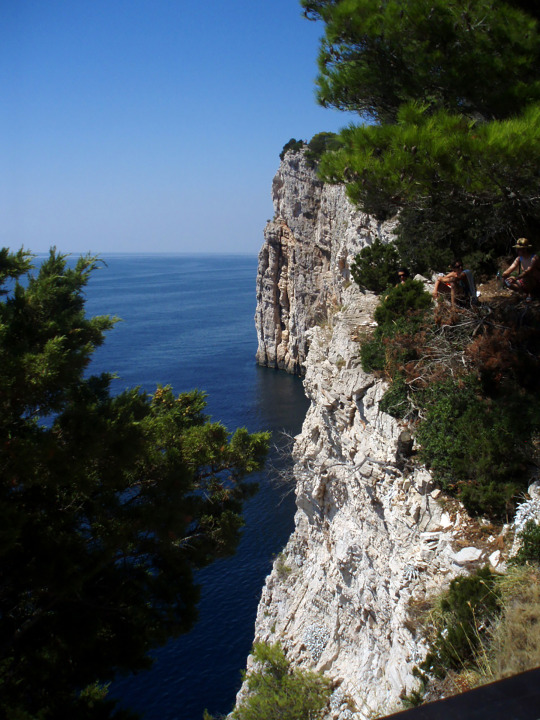
Here you have two photos back from the 2009. The cliffs of Telašćica park and the Salt lake Mir (visible on the first picture). I never though I’d stand here again yet there we are.The second photo depicts even higher standpoint..as if this one was not high enough. Mirel and I were standing maybe 2-3 km to the north looking down at these place
After some time we left back for Zaglav. Well, more about the bay of Telašćica the next time we actually spend our time there. It was a good day with many activities and we made a deal for the upcoming morning. The deal was to wake up early and make a trip to the northern part of the island - exploring the area and finding locals in Soline, Dragove, Božava and Veli Rat. Before meeting the monks I went for a few more shots of the nature around the monastery. The monks welcomed me with the dinner they left for me and after exchanging the news each of us went to sleep.





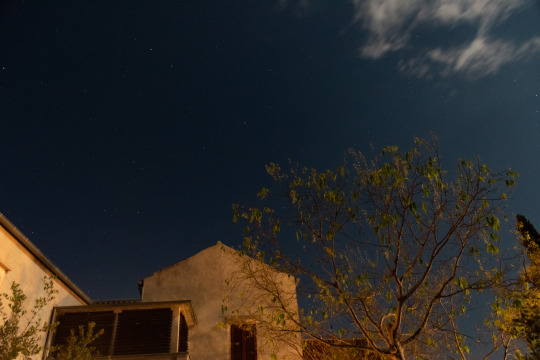
The still night at the monastery. Looking for more night sky photography? Check some photos of the night sky near Vodice and Tribunj
Back in the room - making sure to transfer videos, audio and photos to my laptop. Charging the batteries and off to bed. Coming up next are...Božava, Soline and Veli Rat. PS Sorry for the crappy photo resolution. I believe it hurts your eyes as much as mine...soon switching to new web but until then have to endure this bad tumblr theme.. Grgo
#sali#croatia#dalmacija#dugi otok#croatia long island#saljani#grpašćak#garpašćak#fort grpašćal#telašćica#park prirode telašćica#dugi otok cliffs#monastery zaglav#samostan zaglav#samostan sv. mihovila#monastery st michael dugi otok
2 notes
·
View notes
Text
Arrival on Dugi otok: The monastery and the locals in Zaglav
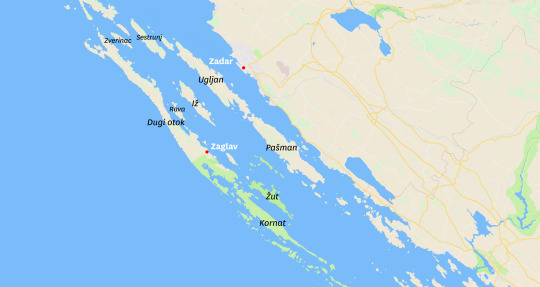
Zadar’s archipelago. The trip started in Zadar and ended up in Zaglav on the first day.
I took the bus **from Zagreb to Zadar **at 6am and planned to get on the first boat that goes for **Zaglav **afterwards. While almost missing the bus in the morning I managed to get there in time and bought the ticket for my catamaran. The ticket for the non-islanders was about 20 -25 HRK (around 3 Euros) for one direction. Soon enough I was aboard the catamaran whose trip to Zaglav took around an hour and 15 minutes. During the trip I had the pleasure to talk to one of the locals from Sali who shared some tips on the DOs and DON'Ts on the island.
On it’s way to Zaglav we went beneath the bridge that connects the islands Ugljan and Pašman passing by the town of **Kali **(another place on the list to visit). Then you find yourself surrounded with multiple islands I couldn’t remember the names yet the last one to the west had numerous hills, so long you couldn’t see its end. Of course it was Dugi otok (the Long island). I’ve never been so far to the west in this area and the inner Indiana Jones for exploring and adventures was waking up.

This was my printed map of the island. I removed the names of the wanted locals for the interview and where to find them in each place due to privacy.
Soon we reached Sali and headed then few minutes to the north to Zaglav. I took all the stuff I had and I had several bags and a luggage. Just before we reached Zaglav I had two phone calls from my local saviours. One was from friar Izak, the monk from the monastery, who was waiting for me and my stuff with his squad in his car. The other one was Goran, the guy responsible for delivering the bakery products across the island throughout the year in his van. He was the one who helped me with the vehicles by lending me his old car to use for four days. Just when I stepped on the island he was there at the gas station tanking it up fully. Yes, full till the end. I gave friar Izak and his fellas my stuff and met with Goran and his family to take me up to the monastery.
Here it was where I earned the name „The Baker“ in the next couple of days. It started with his wife asking me „So, are you a baker?“ and later on several locals who’d see me coming by car (as Goran does) would frequently ask me „Are you a baker?“. In the end I gave up and said „Yes, I am a baker“. The second name that followed me was “The Journalist guy”.
We went uphills. Now here is a thing with the most places on Dugi otok. The core of these villages is mostly on the hill, not next to the sea. People went down to the coast much later. The monastery was at the end of the road on the hill. Also, the roads are only for one vehicle at the time which was interesting as you had to be careful if someone from the opposite direction was coming from behind the corner and then one of you two would have to somehow the way to step aside. That was done either by going backwards or finding a quick spot to move aside. Not to say that many of these roads or streets were pretty narrow and at some points you were surrounded with the stone fence wall. All of this makes it easy to damage your car. In the beginning I was more careful with it but then grew confidence because simply the things like that are just normal there and you gotta accept it. Again, you can’t do this in Zagreb without bad consequences.
**The monastery of St Michael **
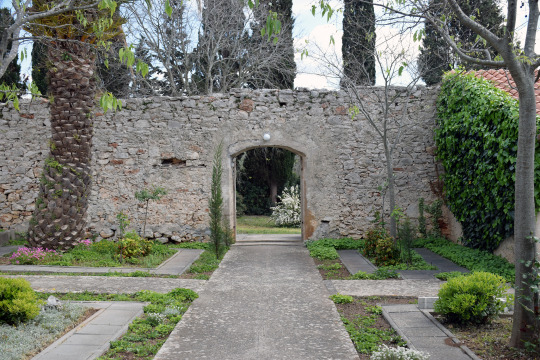
The entrance as seen from the center of the yard
Voila, there we are at the monastery. Somehow typical Dalmatian look or actually Mediterranean. Bell tower, local graveyard and the monastery with its yard and garden just at the end of the street. Soon arrived friar Izak and the other dudes. Passed through the gates in the middle of the wall and entered the yard. It was guarded by two cats.
The Franciscan monastery and the church of St Michael were built back in the mid-15th century by the Franciscan order of the Glagolitic monks. Glagolitic is one of the old Slavic scripts, somewhat similar to Cyrillic, that was preserved in Croatia mostly on the islands and some northern areas within the religious context and local or folk language. The monastery today is of course an expanded version of the original one.

The monastery and the church as seen from the bell tower
When seeing all these stuff inside the yard and this whole idea of being in the monastery I quickly returned in my head to Robin Hood games where you had to sneak and climb around monastery’s walls and hallways. It would have been awesome if I had visited it with my friends back in the childhood though even now it could serve as a cool film location. But the best impression of the monastery and its surroundings is surely early in the morning when it’s fresh and enjoyable to be outside, the shadows are soft, relatively quiet, you can hear the animals and prepare for the day with pleasure. I tried doing some exercise in the morning but failed.
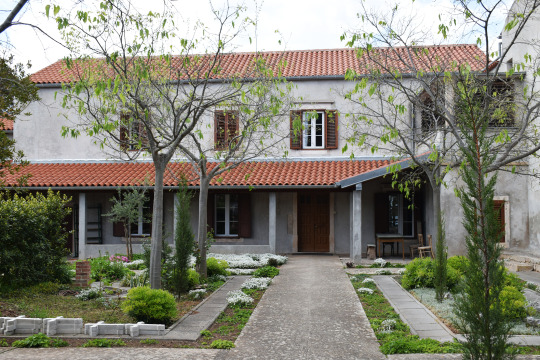
The look from the entrance into the yard. My window is on the second floor in the middle.
When you say „a monastery“ you might think of the medieval buildings where they still use the candles but man, I got 5-stars room with my own bathroom. So there were now three of us residing in the building and each of us had our own room upstairs. Once you enter the monastery you are in the hallway where to your right is a small library. Straightforward you got one SOS restroom and then the stairs to our rooms. The hallway there was filled with some large paintings of religious content and Glagolitic engravings. Back downstairs, to the left, one enters the „living room“ where they can watch TV and turn on the oven when necessary. Few steps behind and you enter a modest kitchen with plenty of food. Oh yes, they said I just pick up whatever I want and they had lots of stuff. Even better, behind the kitchen in the basement they had a pantry. It felt like Goku being on King Kai’s small planet with whatever you want.

Some hallway paintings of…well… someone
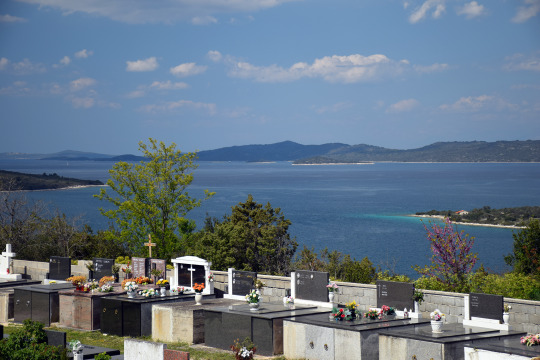
The look from the windows on the other side towards the north. What you probably see are the islands of Krkata (the closest one), then Iž and maybe far away Ugljan or Sestrunj..or something else, who knows, so many islands…
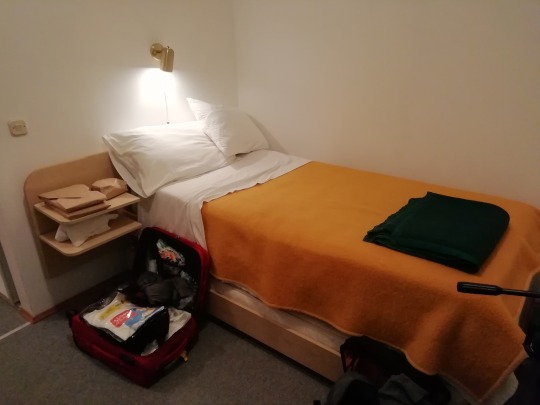
One part of my room…the rest is in the mess but there’s a table behind me, the window and to the left is the small hallway with the wardrobe and separated bathroom
The view from my room taken in the evening
Soon enough I was welcomed with the lunch. They have a lady who cooks and cleans for them every day and this was also covered so that I don’t have to spend money aside. As you can see this all was really way more than I expected.

Friar Izak taking care of the stuff in the kitchen
This was probably the only lunch I had with them as I spent every next day somewhere else waddling around. We made some rules about breakfast around 7am and had dinner together in the evening. Even though they usually go to sleep by 10pm we used to talk about different topics until midnight.
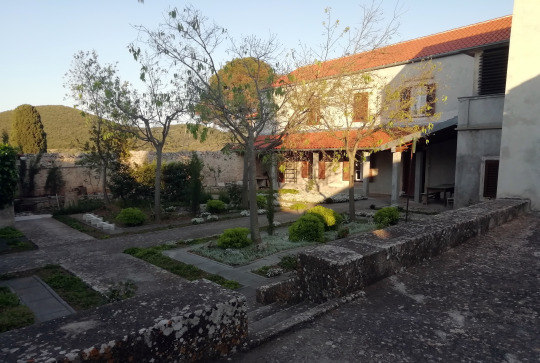
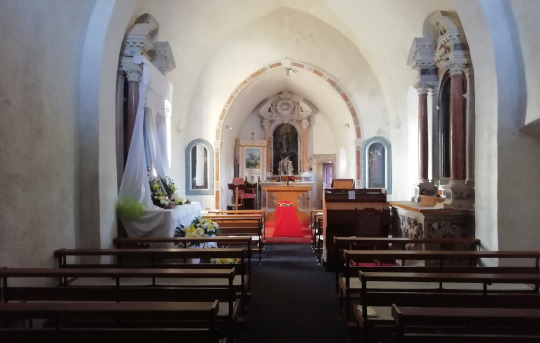
The first photo is of the monastery’s yard. The second one from the Church’s interior
And what about friar Izak? He definitely is a guy with lots of energy and ideas. Born in Zaglav in 1936 but spent most of the time away from the island he is a a big church musician, conductor and a researcher of the Glagolitic heritage. He is also one of the founders of the mixed choir “Bašćina” (Heritage) and several years ago revived the real Renaissance Zaglav liturgical singing. He is fun to talk to and throws the jokes all the time. More about the conversations and his stories in the upcoming posts.
Zaglav: An afternoon in the bay of Triluke (Three ports). Meet the first locals.
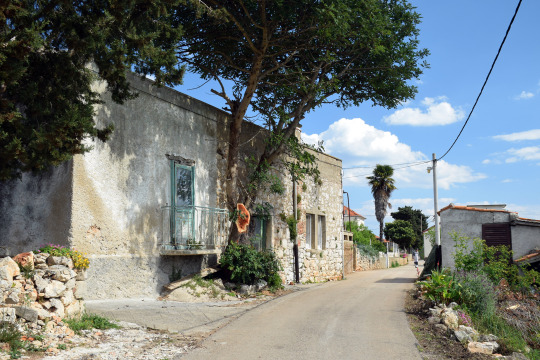
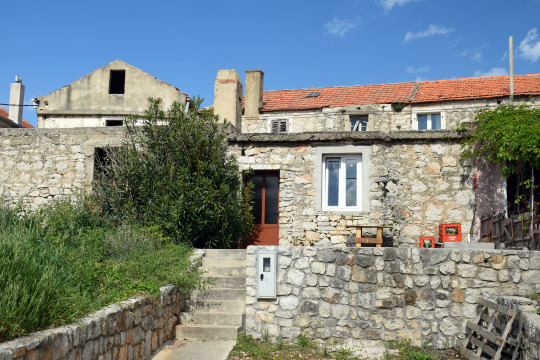
After lunch I decided to go down to the village on the coast. Grabbing my camera and other stuff I took the path that goes to the bay. I had it in plan to meet with Zvonko – the young gas station owner whom I reached few days earlier. He knew I’d come and so he helped me to find the potential candidates for the interview. But what about Zaglav?
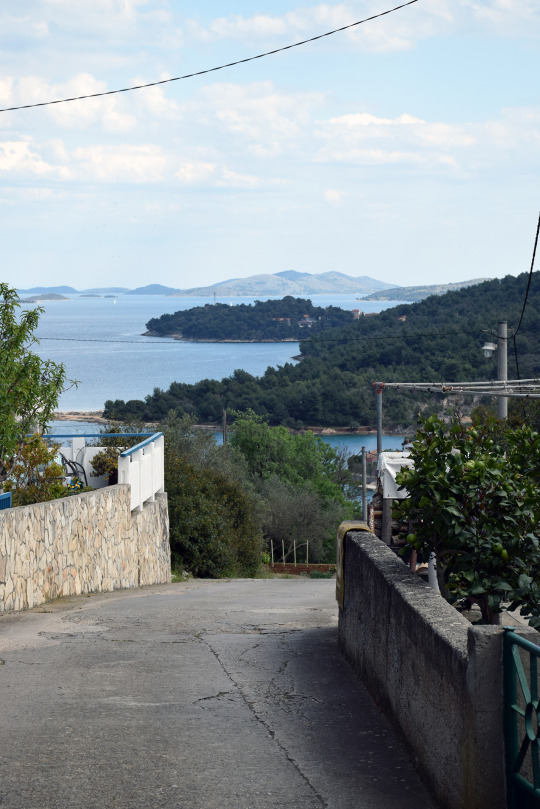
The road down to the bay of Triluke
It’s a village in the southern part of Dugi otok between Sali and Žman. The records say it was inhabited in 15th century and many of the locals are the descendants of people who flew before the Ottomans. The population of Zaglav is around 174 people though there used to be 300-500 people just few decades ago. I’d say today it’s even less than 170 but we will find out more in 2-3 years. People there mostly live from tourism, sailing and fishing with some small agriculture part. Some work in Sali or move to Zadar or other places on the mainland. Zaglav has a relatively good boat connection with other places and the mainland. Here used to be a ferry port before they moved it to Brbinj. I didn’t go around the whole village on the bay but down there you can find a few restaurants and the gas station also serves as a small store. **This gas station for the cars and the boats is the only one on the island. **
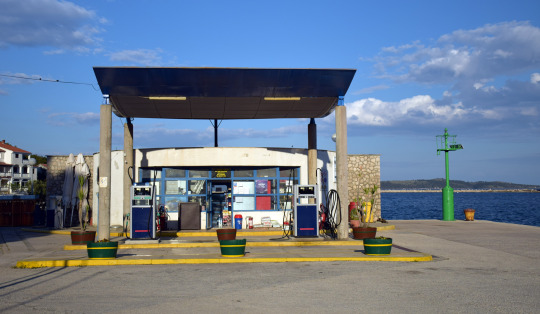
So while walking through this street downstairs I met Zvonko and his dog at the gas station and soon was introduced to the other local dudes who gathered nearby and enjoyed some drink. There I met my future companion and help for the upcoming days - Mirel. After receiving a welcoming drink and introducing myself Zvonko took me to our first star - his father who was repairing the fishermen’s net. Here comes the summary of the interview I had.
Mr Špralja the Sailor
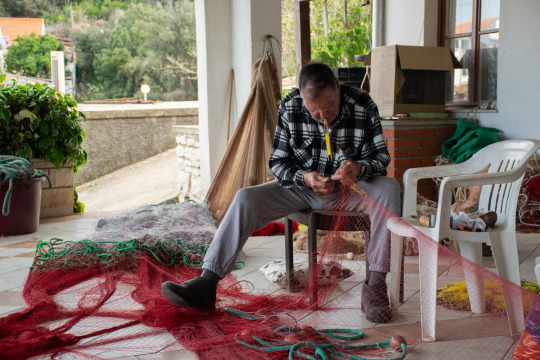
As I approached hime while repairing the net he started explaining me the type of the net he uses and what kind of fish it can catch. He learned the skill from his father and grandfather. Being in pension for many years and not being able to move a lot his main hobbies are repairing and maintaining the nets plus doing some work with agriculture. Right now he had problems with the holes made by the dolphins but as he said - it’s gonna take him around a week to finishing repairing this net around 100 meters long.
His family came from Bakar to Zaglav and** Kornat island** which is the story many other locals shared.
He had spent over 30 years sailing around the world going twice around the equator and visiting all the continents and ports except for Australia and New Zealand. He told me the only experience he remembers most that scared him was during their trip aboard the Jordan Nikolov ship on the Atlantic ocean during the stormy weather where he had to go down inside the ship and make sure to have the gas ventilation closed. As he added “There are no good things on the sea, only the bad ones.”. Also, he believes the young sailors nowadays have it much easier as they don’t have to spend a whole year on the boat and vehicles (technology) is much faster and precise.
Speaking of the food and how it used to be back then he started with the meals they got on the ship. As there used to be 30-50 crew members they had two cooks and one assistant adding that the food was “solid”. On the island, back in his youth days, the main food was fish. The meat as we eat it today was not available and couldn’t be bought easily. You would use what you had of your livestock which included lamb, goats and mutton. In winter they used to fish for the smaller fish, 30-50 of them weighing around a kilogram. In spring there was more of the bluefish such as mackerel or chub. Cuttlefish or an octopus were also options. Dried octopus, he added. They didn’t have much of the potato and people mostly ate collard greens. Berries and beans were also popular. The problem was that the fields on the island were not as rich and potent for the agricultures as it is on the mainland and there has never been much of the freshwater. Those families who had some livestock such as goats or sheep would make milk and cheese. For breakfast you had milk and cheese, fish or some other meat for lunch and for dinner different types of greens.

Repairing the net where two bigger holes were made by the dolphins
What about games and how they used to play as children? The hide and seek obviously never gets out of fashion, no matter the generation. Among other games football was popular, played in the “Old village” upon the hill. However, there weren’t balls like today so they used the the ones made from rags. During the carnival and masquerade there is a custom of setting a fire etc.
And schools? He told me there was around 10 of them in the generation that went to school in Zaglav and Sali that had up to 7-8 grades. Those who wanted to learn a foreign language would have to go to Sali. There he learned a bit of German and his knowledge of English came through navigation around the world. In the end, he forgot almost everything since he returned to the island.
Finally, he believe young people will have an easier life as there are much more opportunities than in his days. Tourism is the number one industry. The problem with the agriculture he sees is that it’s not enough today to earn for a living and many fields were divided into plenty of smaller parcels and those who own them stopped carrying for the land. He concluded again that only with the tourism he can see the youth prosper.
Afterwards we visited three more people whom I asked similar questions. However, I will share the story of the last ones – an old couple living alone in their home. The story of Marjan and Vera Špralja is one of the sad ones you are going to hear.
Life story of Marjan and Vera Špralja

I met them upstairs on their terrace enjoying the snacks and soft sunlight. Though at first a bit reserved and silent soon they warmed and opened up. Quiet simple and modest people who had experienced a lot. Both over 80 years old.
We started with the family background. They came to Zaglav from Kornat island though their ancestors came to these areas from the mainland around Bakar town. Marjan was the eight out of ten siblings and probably the only one who stayed on the island whereas the other went to different places and countries looking for the better opportunities. One of his brothers is living in Australia. They stayed here on the island as the simple shepherds and fishermen. They spent 20-30 years living in the Old Zaglav upon the hill before moving to the bay. They also spent most of their lives on Kornat island. Further on, they explained me the name of the bay – Triluke (Three ports) and the division between the village „up there“ and „down here“. Up in the Old Zaglav (S_taro selo_) there are mostly seniors living, not many of them…while the bay is filled with younger members of the community, families with children.
Speaking of the past they reminded me that once there lived around 400 people in Zaglav while today there might be not more than 50-60, he guessed. The school that used to be open is now closed. This also comes from the fact that families in the past were much bigger with 5-8 siblings. The same case was with my grandmother.
I wondered how the two of them had met. They happen to meet each other back in the elementary school. They said they finished only 3-4 grades and have the essentials skills for living – writing, reading, driving the car and the boat…and some knowledge about the agriculture. There were no teachers, they said. The one teacher used to come twice per week to teach the locals.
We moved to the stories of being on the sea. Marjan is an experienced fisherman and we would have needed an extra day to listen to all of it. The biggest enemy he’s always encountered was the stormy weather at the sea and the wind. One time, during such occasion, he was forced to jump from the boat into the sea in order to push it to the shore otherwise the boat would have been lost.
However, the biggest tragedy they have encountered is with their children. Their son died at the age of 19 losing battle to illness and their daughter (50) is fighting the similar battle laying immobile in the hospital. “Misery and sorrow, that’s our story.” Vera told me.
She moved on saying “We had the sheep on Kornat island, we were fishing, we had a vineyard…and I had been working at Mardešić Fish Factory in Sali for 26 years. And ill children. Nowadays people complain they have no time for anything. They have one child and still busy all the time.” - “Yeah, they waste their whole day trying to put on the make-up”, added Marjan. “We also got up earlier than people today.”
The house they live in was built by Marjan himself. They sold one house to a cousin who took care of them since they won’t have any heirs - otherwise they would keep it for their children. Vera is today suffering from several pains and the similar goes with Marjan. Apart from the cousin who visits them sometimes they have no one else on the island who can help them. The hard life and problems took toll on their health.
We came back to childhood they also described as a misery and famine. Marjan explained there was no such luxury as today to have smoked ham and cheese on your table along with other food we throw away recklessly…but dried figs mostly. Vera carried on pointing me the oranges, olives and lemons they have in their garden. They are happy as they get the fruits from those trees three times in a year.
We ended up our conversation with them asking me about my background and how come I ended up on Dugi otok. They thanked me for visiting them and I was thankful them having shared their time with me.
We are done with the interviews in Zaglav. I came back to the gas station where I met Mirel leaving in his car. He gave me a book about Dugi otok and NP Kornati. As I found out Zvonko had told him to watch over me and help me getting around. Sounds like Sam and Frodo thing. We made a deal to visit Sali in the evening and go for some pizza.
I returned back to the monastery and spent some time talking to the monk-dudes.
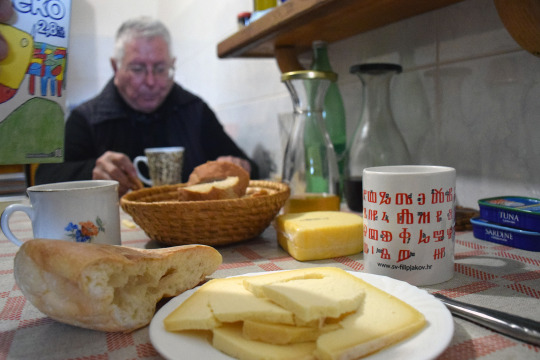
Dinner with cheese, bread and wine with my fellas from da monastery
More about the upoming evening in Sali and visiting the cliffs of Telašćica near Fort Grpašćak in the next post!
Grgo
#dugi otok#dalmacija#dalmatia#zaglav#samostan na zaglavu#samostan sv mihovila#monastery dalmatia#long island croatia#interview#the locals#documentary#photography#video#tradition#customs
0 notes
Text
Welcome to Dugi otok

It's been my wish for quiet some time to visit Dugi otok (Long Island), the long and the most distant of the Croatian islands located in the center of Croatian part of the Adriatic sea. Actually, I visited one part of it – the Nature Park Telašćica, when I was a kid more than 15 years ago…but never other places and with the new purpose. However, my wish had been granted surpassing all the expectation I had about this trip.
The main reason why I wanted to travel there was to find and record the locals who speak the local idioms. For those of you who've been following me for the last couple of years and especially my YouTube channel you know that this was a super exciting trip for me. These native speakers represent a national and cultural treasure in terms of lingusitic heritage and a history of the litoral and maritime people living here for centuries, with some of them being isolated or with little touch to the land (terraferma). Thus the excitement to hear the living past and a nice blend of the Croatian Slavic culture and the Mediterranean Latin influence.
Apart from finding the native speakers I was excited to find out more about being and living as an islander. So I had to chance to record, hear and take photos of stories and experiences of the local people from several villages including both youth and seniors.
How it all started

I was super lucky to be given the opportunity to stay for four days on the island and meet many people whose help I never expected. I got the accommodation for free at the local monastery of St Michael in Zaglav which was thrilling enough and especially valuable since they allowed me to stay during the festive days around Easter. As soon as I got the confirmation that it's not a hallutination but a reality I looked for help among friends and acquaintaes who could aide me in getting to know the island and the locals. Without them this trip would have looked totally different as I knew practically nobody there. In the end I made lots of friends and had plenty of fun while doing my mission. I spent literally days and hourse right before the trip to get the additional camera equipment, gather as much as valuable information about the locals as possible, creating my own map of the potential people for the intervju and preparing the daily routes.
But before we dive into the adventures here's a some info about the island.
About Dugi otok

What do you need to know about this paradise? Dugi otok is the largest of the North-Dalmatian islands situated in the central part of the Croatian Adriatic. Iti s also the last island before the open sea and Italy on the other side of the Adriatic bay. Just like the majoritiy of our islands it has many hills and small bays with its highest peak of Vela Straža at 338m. The island is around 45 km long (hence the name) but at some points its width ranges between 1 and 4 km. This contrast was especially visible when I was driving a car from the south and at one point I stopped and looked to my right – there you see the islands towards Zadar and Velebit mountain. Then you turn to the left and see the nothing except for the blue sky, horizon and the deep blue Adriatic sea. However, during the crystal day and with a good eye sight one can see the eastern Italian coast, more precisely – the Apenine mountains. After all, Italy is less than 200 km away across the sea.
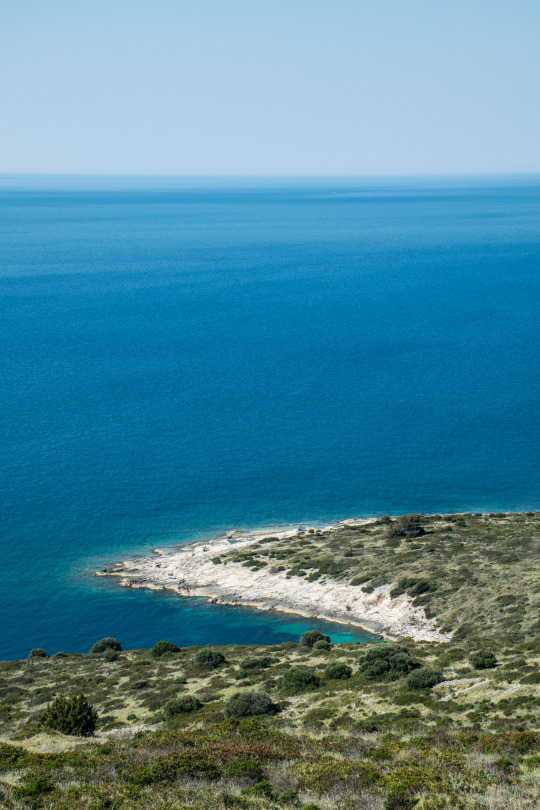
Its western coastline bordering the open sea characterize the sharp contrasts: the southern part around the Nature Park Telašćica is surrounded with impressive cliffs that go up to 80m in height. Telašćica is one of the most beautiful place sin Zadar county and frequently visited by numerous tourists each year.
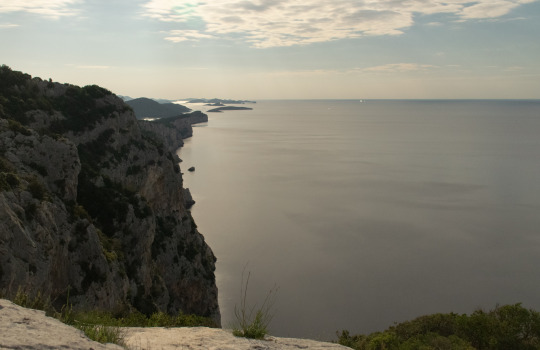
On contrary, on the other side of the island you can find more peaceful bays. The two most notable beaches are Sakarun and Veli Žal where Sakarun is the most famous one. However, last years due to growing number of visitors and greediness it no longer looks and is as it was 10 years ago. I also never went there but visited Veli Žal instead. All in all, the nature on this island is incredible and as the locals say – you hardly notice any seasonal change. It always looks as if the time had stopped between spring and early autumn. Always green and no leafs falling. In terms of nature this island will be a perfect place to escape the reality and the stress of the modern lifestyle spent in larger urban areas. Clean sea, peaceful nature and the welcoming locals.
People, customs and history
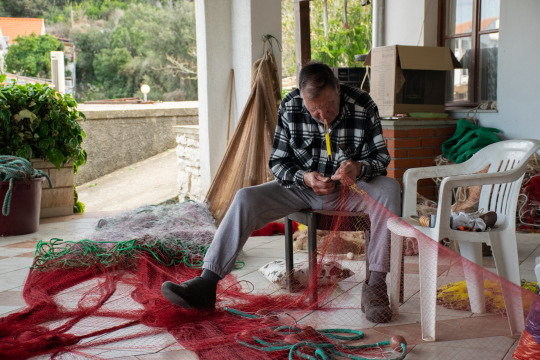
Speaking of locals the island has a population of roughly 1500 inhabitants spread in around 12 local villages. The largest of them is Sali in the southeastern part of Dugi otok with the population of around 800. On contrary, places such as Dragove or Veli Rat in the north have between 40-70 inhabitants statistically. However, accoridng to the stories, there's far less people who actually live for the whole year. The sad truth and reality is that these places will become ghost towns within 10-20 years as the majority of these locals are seniors over 80 years old. The thing is – apart from them most of the visitors are so called „weekenders“ – the islanders who live on the land (e.g. in Zadar) who come there over the weekend…or the other part that's present during the summer are the diaspora. These are the people whose parents, grandparents or further ancestors emmigrated to the United States, Southern America or Australia and New Zealand at the beginning of the 20th century or around the years of the WW2 in search for better opportunities and life across the sea. There are even some remains left of the WW2 bunkers and ship tunnels that I am going to describe you later (I couldn't resists visiting some of them). And even today one can find near the central part of the island a restricted zone which belongs to the military whose base is on top of the hill. It's said it used to watch over the potential threat that comes from the south or across the Adriatic sea.

The population of the island was thus much larger, actually surprisingly larger. However, the Great War in 1918 and the Second World War had taken the toll with great consequences. Many of the islanders died or were killed during those time, especially the young people, men, who were meant to start new families. Those who survived either stayed or moved to new places. Some places used to have a lot of children attending the schools. Now some say it's „a success“ when they managed to gather up to 10 children of the elementary school in total. And they come from different villages.
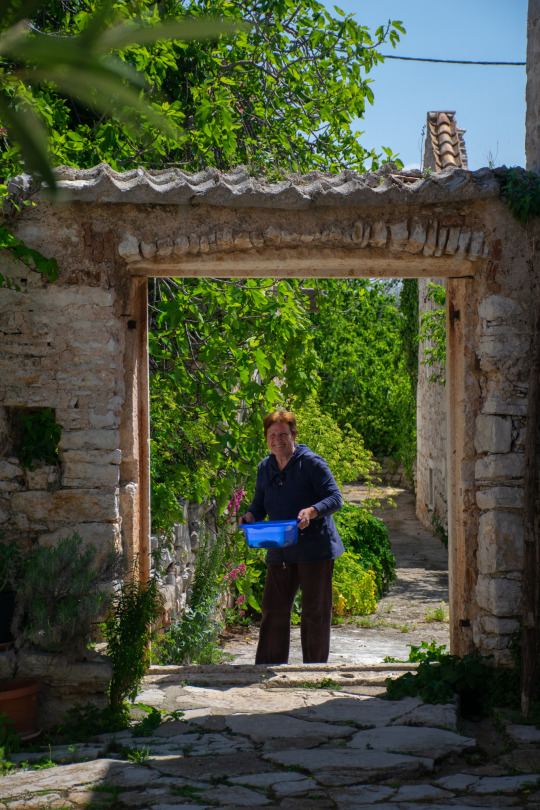
Being on the island many of the locals have traditionally been turned towards the sea and what it offers. It's not unusal to find people who have spent their lives sailing around the world. Some have been fishermen. Some are into agricultulre and what it offers. Unlike us who live on the mainland here you can't have super large fields but smaller ones where you take care of goods and cultures such as figs, oranges, lemomns, tomatoes, potatoes, salad and olives. In Sali there is a fish factory which provides employment for good amount of the locals. There is another important factor in the lives of the islanders and that is the Church and religion. It's not unusual to find many of them to be (kinda) devoted Catholics who go to the church every Sunday. After all, as some explained me, it's also a social thing or event, when you think about it. And living there for centuries, relatively isolated and surrounded by nature and vast sea surface, one shouldn't be surprised to see faith and religion rooted deeply in the locals. And being an islander does not mean living an easy life, as you are going to find out. Speaking of religion there is this Franciscan monastery of St Michael in Zaglav with a church that was built in mid-15th century. That's the place I stayed at.
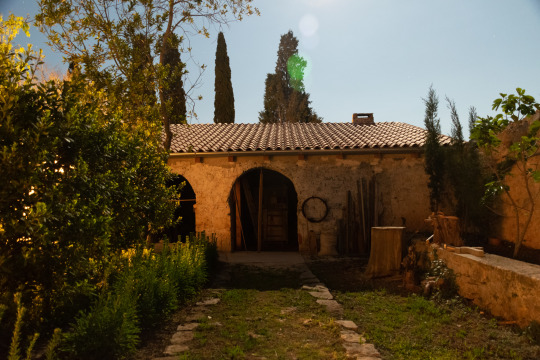
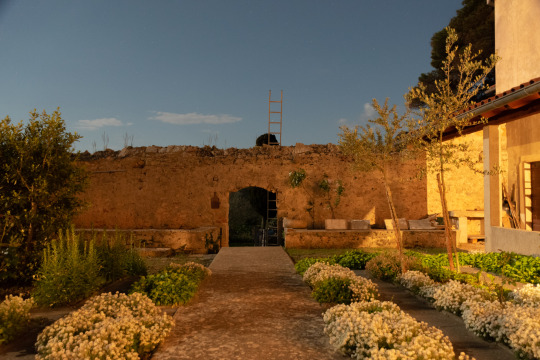
The places on the island are connected with one main road from which you have amazing views over the surrounding islands and area. The island has also got quiet good connection with the mainland via trajects and speedboats (catamaran). There are four catamaran lines that go daily from Zadar to Dugi otok. If you are planning a trip on Dugi otok by car you will arrive by traject to Brbinj in the northern part of the island. The same goes if you want to leave the island by car. Speaking of cars the only gas station on the whole island is located in Zaglav in the south. That's also the place I arrived to and stayed at for four days.
What else to add? During the summer season many are some festivals related to religious events, local music and traditional kitchen. Those who prefer to spend their time actively they can go exploring the area, follow many hiking roads, visit the caves, Park Telašćica or National Park Kornati. If you are more into sports then I suggest finding some diving locations or courses, try running, trekking, biking, trail, sailing etc. At the northernmost point of the island at Veli Rat there is another landmark of Dugi otok - the lighthouse of Veli Rat.
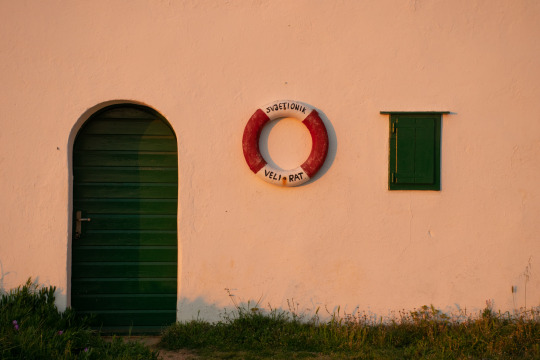
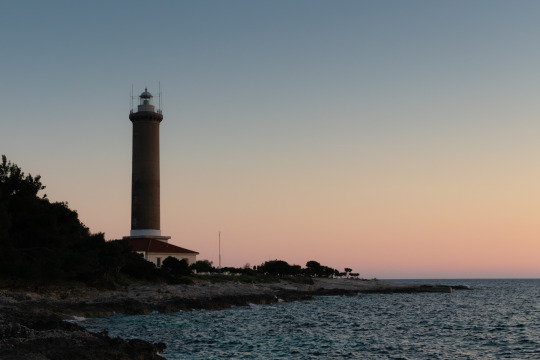
I forgot to mention some of the older history of the island. Here are a few interesting things to know. The island was already inhabited with settlers in the early ages in paleolithic and mesolythic. Several years ago scients discovered the human skelleton that date back to 11 000 years BC. This discovered male Dalmatian known as „Šime“ died unnatural death at the peak of his retirement age of 40.
One can find the remains of the settlements and stuff of the ancient Illryians. There are also several caves on the island and around Telašćica park one can find tomb hills dating back to Iron age 800-400 BC. The last thing I'd add here is the Grpašćak Fortress on the western coast above the cliffs of Telašćica. It was built in 1911 by the Austro Hungarian Monarchy which served as a military patrol base. I came close by my first evening on the island but more about it in the next post..
Time for a break
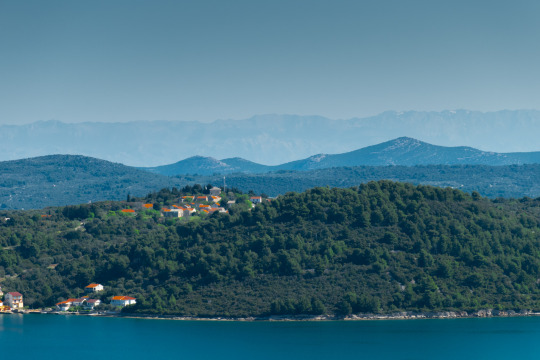
Alright! I hope you have some idea about Dugi otok. More in details on specific topis as we surf through the days. Grgo
#dugi otok#dugiotok#croatia#dalmatia#travelling#long island croatia#adriatic sea#local people croatia#locals on islands#potepuh#zaglav#sali#božava#veli rat#lighthouse#nature#landscape#dragove#savar#telašćica#telascica#cliffs#adriaticsea
4 notes
·
View notes
Text
Day 2: Exploring Dugi otok. First stop Soline

The fish ponds near the bay of Luka
Morning at the monastery
The first morning on the island started without the alarm clock waking up at 6am. It was friday, fresh air, the sound of the birds in the yard, early rays of sun through the window shutters. Somewhat different change from the everyday in Zagreb. I haven't slept so good in a while and felt as if I had been plugged into a charger during the night. The fact that I didn't have to go to my workplace in two hours and had now a luxury of the prolonged weekend might have also helped.
The best part comes when you open the window and instead looking at the neighbour in his underwear at the balcony of the 8-flat building on the other side you first have a look at the monastery's yard. Gardens, walls and the workshop. Looking to the right (southwest) you see the hills and forests along with the main road that goes to Sali or Žman in other direction. If you look just straight behind the walls of the monastery you see the houses of the Old Village Zaglav. What it looks like you can see in the video below.

The morning in the monastery

Friar Izak preparing his breakfast
Usually one of the monks would walk around the yard and do his stuff. I had a desire to start exercising in the yard which is ideal for yoga, work out and similar. However, this desire quickly disappeared when I went downstairs for the breakfast. We had an earlier agreement to have a breakfast at 7am. And so it was. We took half of the fridge on the table and I grabbed me some stuff into my travel lunch bag as having the lunch at the monastery was no longer an option. And really, the first and the last time I had lunch with the monk-fellas was on my arrival day.
So, the plan was to spend the whole day exploring the other side of the island, the northwestern one. To visit some of the following places: Veli Rat, Verunić, Soline, Božava, Brbinj and Dragove. In case you haven't, you can read the first blog post to find out more about the reason I came here and was excited to go around.
Anyway, in almost all of these places I had a few names on my "Middle Earth Map" which were potentially good candidates for the interview and recordings of the insight into the local life and customs. Since I spoke to one guy from Soline the day earlier so the plan was to go first to Soline.
However, things didn't go as quiet as planned and I postponed the trip for somewhat later since Mirel, my bodulovac companion, was busy. We fixed it though the next day which you will read in the new post. I also took the time waiting for him to go around the monastery and here’s one video:
youtube
Took most of my camera equipment and food survival pack out while greeting the monk-bros and our cleaning & cook lady. Goran's car waited for me in the shades close to the bell tower. The weather forecast was actually great - a sunny day up to 20 degrees Celsius. Or for my US friends - up to 68 degrees Fahrenheit. Which meant only one thing - t-shirt!
And now starts what I have always wanted - to go around exploring the unknown area in search of the new challenges on my own with the camera in my backpack. Turned the Indiana Jones adventure mode on, kept calm and put the sunglasses on.
Gremo na zmorac ... or... Off we go to the north

Okay, maybe they don't say it that way but hey - I'm the new one so don't judge me, judger. As far as I know "zmorac" is kind of the northwestern wind that blows from the sea to the coast. Similar to "maestral" I believe. Also, the wind directions serve as the world directions (north, south, west...) in many places on the coast but also in other Mediterranean countries.
Here come short experiences and descriptions of the long ride along the main road from the southern part of the island to the last inhabited places in the northwestern part of Dugi otok. Now, it all takes less than an hour of a decent ride by car. Of course, I couldn't miss the opportunities to stop here and there on the road to go out, take some photos and look around.
Leaving Old Village Zaglav went smooth without problems. Remember the narrow streets surrounded with little stone walls? And the cars that can face you at any moment? I tried to be careful the whole time as I was driving someone else's car and because of these specific dangers. But let me tell you something about driving the car on the island in general. And it also affected me in the end as I became more "relaxed" and absorbed the local driving logic. I heard many people don't have a drivers licence and since the roads are mostly empty (apart from the summer tourist season) you automatically become more relaxed and confident on the road. However, some were way too confident and careless and there were accidents, especially on the curves. Then you also have the wild animals that can jump on the road such as the mufflons. Not to mention individuals or groups who ride a bike or run just behind some corner.
I was driving having all this on my mind and as you can see (and Goran) nothing happened. I have to say I really enjoyed the rides around the island and exploring the local streets or some less visible paths around the main road. There was this sense of freedom of movement and exploring I love and mostly have when moving around on my own on the bike in Zagreb or some other place.
So what can you see on the road between Zaglav and Soline?

What can one see on the around 36 km route? There are lots of ups and downs into the hills and then to valleys and bays. At some points the road is almost on top of the hills with nothing on each side...and then the landscapes changes to having the high hills to your left and to the right a slope ending with some bays and the spectacular look towards the islands and the land to the east. Another great thing is that at some places the island is so narrow that you can see the landscape and the sea to your left and right. This was also the thing that I loved most.
In the first 10-15 minutes you pass by the town of Žman and Luka. I had no one on the list there so I skipped them. Soon the road started going uphill and I stopped at the top to take some photos. There you have a nice look towards neighbouring islands of Iž, Rava, Ugljan, Pašman and far behind towards NW the island of Sestrunj and mountains of Velebit.
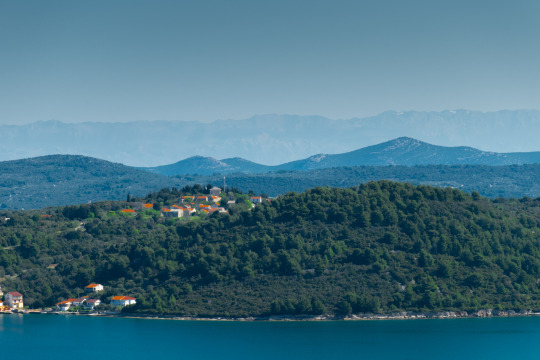

What I remember next was a road to the west that climbing up the mountain. There was another military base of the Croatian army and the path was forbidden for the rest of us. This also sounds like a good SF plot on Dugi otok. And there are more places, as you will discover. Who knows, maybe soon we come up with "The mystery of the Long Island". ;-)


Few minutes later you come to the part which is guarded by the high hill to your left and some narrow slopes to your right. It's also part of the road that looks like an ideal place to test your racing car. But don't try it. After the corner I stopped by some large "park your car here" place. There were some tourists climbing the mountain road as the sign informs you that it leads you to the cave "Vela Straža". I leave it for my next visit.
youtube
Now, in the following 6-7 kilometers, until we pass by Savar, the road goes zig-zag between the hills, a bit up and down. I believe it was here at one point that I found this place where you stop and look towards the right (or the east). You see the bay below, numerous smaller and bigger neighbouring islands and Velebit mountain far on the horizon. Now you just rotate by 180 degrees to your right (or the west) and you see the vast open Adriatic sea and maybe if you are lucky you can see the glimpse of the Apenini mountains of Italy. After a short existential moment I drove off.
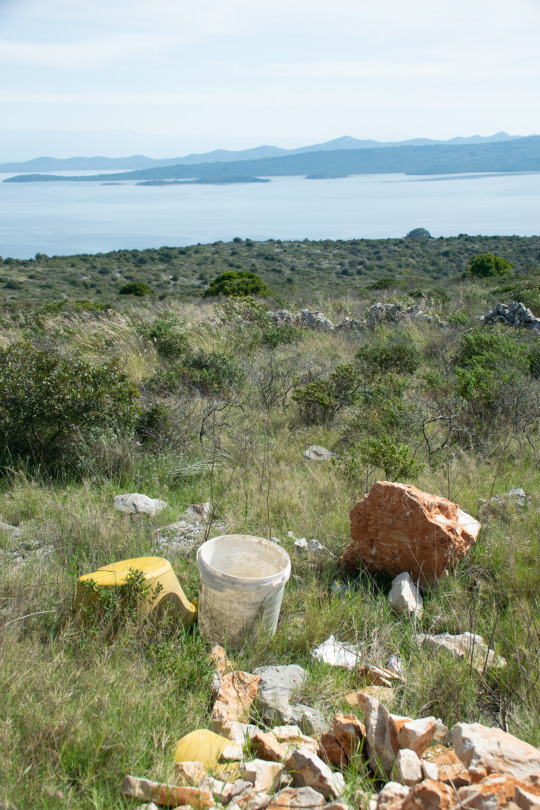
Unfortunately, there are still careless people who throw the trash at the random or specific places around the island. So I came across one such and found trash. It's a shame you cannot bring it simply to your home, place and put it in the cans where it should be. I guess one should be more careful here since we are talking about the island. Have a look at Japan - they also had it in nature somewhere but largely the towns and areas were clean - and I can't remember seeing any trash can outside. They would take everything home and sort it out there. Talking of discipline.
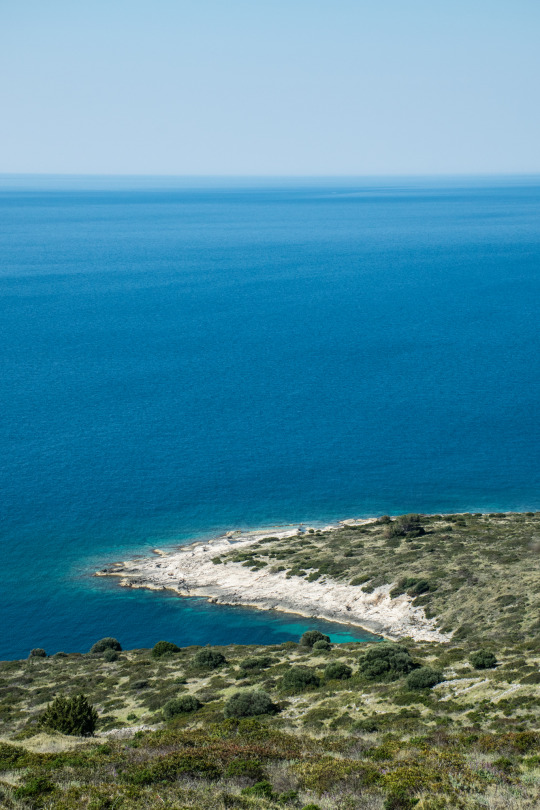
Alright, passed by Savar and soon Brbinj. That's the new place one can take ferry for Zadar or taking your car to the island. Speaking of Brbinj, I had a name there, someone from the family has a family there. But not just that - I heard that Petrov family from Vodice might have actually come from Dugi otok. And where do Petrov members live on Dugi otok? In Brbinj. However, didn't have time and set the priority on other things but I'll try to find out more about it during my next visit.
After Brbinj on our way to Dragove (around 9 kilometers) we are again surrounded with forests. Just before Dragove there is a road that leads downhills towards the beach Veli Žal. Its the place where I took my iconic "Dugi otok" photo on the last day. Oh yes, wait for the "Last day" post.
Passing Dragove, the place I also heard a lot from my US Croatian friend Danny Blasic from NY (if you know him please contact me). He told me to visit Dragove some three-four years ago when we met in person in Zagreb. As he said - one of the places that now have mostly old population and not many of them are in the good condition to speak. I almost missed Dragove but couldn't leave the island without them. And some of you might guess who my local help and interview person was. :)
Soon you reach the Y-crossing where the right road leads to Božava, our second destination, and the left ones goes forth towards Veli Rat, Verunić and Soline. Another crossroads appeared with an extra sign directing you to Sakarun beach. But I turned right following the directions for Soline.
Soline, the beach bar and the grapes

The road goes down the hill to the bay of Soline. Finally, after an hour of the road trip I found myself right one-two meters away from the sea.
Before we continue let's say a few words about Soline. A small town of the population around 40 people situated in the bay of Solišćica. The name Soline comes after the name "salt-panes" (or in Croatian "solana" or "sol" for "salt") and the place was first mentioned as early as the 12th century. Soline also had one of the first public schools on Dugi otok.
Speaking of the population which today (2011) has around 40 inhabitants it is one of the indicators of the reality of demographics on Croatian islands. Just during the years before and after the WW2 there were more than 300 inhabitants, up to 360 as the records say. And just like most of the people on the coast and the islands the Solinjani also have a long tradition of agriculture, fishing and just recently tourism. Joining the other locals in religion the Solinjani also have one church - the Church of St Jacob that dates back to 15th century. Unfortunately, I haven't explored much of Soline to see it but there you go...Let's get back to our timeline.
There was only one car moving, some old couple, as I was heading for the other side of Soline where I noticed the beach bar and the little traffic I was told to go.
As I did a circle around the bay I paid attention to what the place looks like. First thing that meets the eye are the houses with gardens next to each other. The second - there were palm trees alongside the promenade but generally I had a feeling like it's impossible to survive the summer heat if staying outside.
I saw some senior fellas sitting near the traffic-bar and drinking. I parked nearby and went to approach them. Tomislav, the friend of the friend, told me his guys would be aware of my arrival. Things somehow again changed as this had no clue on what I was talking about. Also, they disappeared to their homes after few minutes.
Here it was where I first learned the mistake in my approach when looking for the local native speakers. All of them speak the local idioms that I wish to record but when I mention it to them - they automatically assume they are not good enough, they switch subconsciously to the standard Croatian and also complain that no one in the village speaks any more the "old way". They all thought they need to recite me the Croatian of the King Zvonimir or what was written on the panel of Baška (Bašćanska ploča). They didn't understand nor perceive themselves as already speaking super interesting local dialect as it was normal to them.
What now? There were some young girls and guys around the bar. We got to know each other and I told them my "mission". They understood what I wanted but we couldn't find the appropriate candidate. Another problem was I arrived late after everyone's already been gone home after morning church. However, there was one grandpa whom we visited.
I believe his name was Svetko. He was also a tough one and didn't want to speak in Čakavski saying in a phlegmatic tone that nobody speaks it anymore. In his mind he was referring to the archaic version of his grandparents but again couldn't see that his own everyday dialect was a treasure to be explored. I was accompanied by two locals (actually if they are reading this - a girl from Slavonia and the guy from Soline whom you watched on YouTube).
The classic island story about the customs, life on the island and the dialects
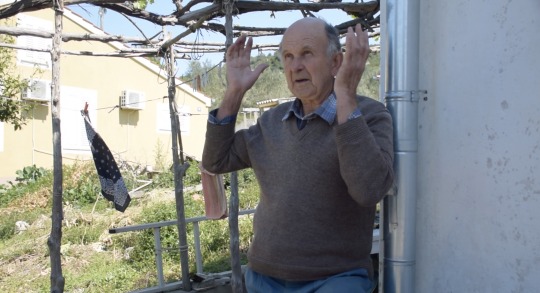
So Svetko simply explained many terms of the vocabulary are simply lost as the technology and the new vocabulary replaced the original ones. Another thing is that many of the traditional customs slowly disappeared and/or are marginalized. The population is also decreasing. There might come the Croats who live abroad paying a visit in summer. Furthermore, many go to live on the land like Zadar or some other place and they gradually replace their mother tongue with the standard one or the other "prestige" dialect. Same applies to youth who are more under the influence of the standard language being surrounded with media 0-24h. Lastly, what I had found out - there is still present this stereotype that if you speak the local idiom you are not educated but stupid etc. I believe this is much stronger belief among the seniors who grew up in Yugoslavia where the standard language was a language of prestige and the local languages where seen as something of lower value.
This is of course something I have been fighting against with others for the last couple of years and my goal with the videos and creative work is to stop the destructive policy of pushing the local dialects into the oblivion. Many fail to recognize that something authentic and true of our identity, history, customs and beliefs are preserved primarily in our mother tongue and language of the local people. With their disappearance we lose our history and authenticity. Thus those little documentary trips I am doing and stuff with the camera are a small step in preserving the authentic local.
After learning some new things from Svetko we were awarded with his home grown grapes. He gave me a whole bag of them which I am deeply thankful for. I never imagined I'd be taking the grapes from Dugi otok back to Zagreb!
youtube
Marin agreed to help me record the video with the knowledge we had and heard some stuff from Svetko. Thus we stepped by and made our first video of the Youtube series! Thanks again guys for the help. I left them at noon as they were going to get some lunch and I didn't have a whole day. I tried to come back later but that was all of Soline this trip. I hope to visit them again in summer with more time to enjoy there as they deserve. In the end Soline are another peaceful place on Dugi otok where you can get the natural medicine for your body and brain. Looking forward to our next meeting.
Now off to our next destination - Lucija is waiting.
#čakavski#dugi otok#dalmacija#jadranski otoci#croatian islands#dalmatia#soline#božava#veli rat#sakarun#travel writing#blog#travelog#zaglav#monastery st michael dugi otok
1 note
·
View note